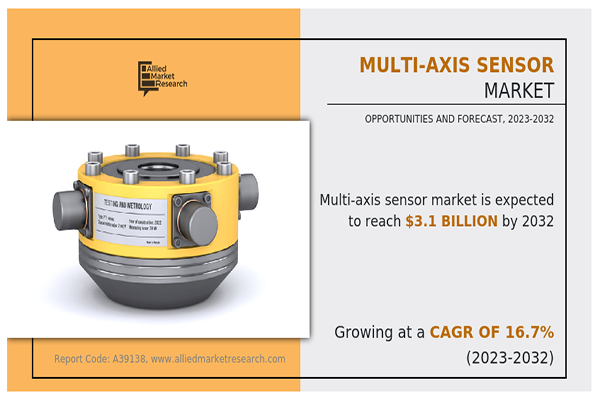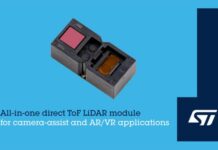The evolution of multi-axis sensors in the dynamic field of sensor technology has introduced a new era characterized by accuracy, connectivity, and flexibility. These sensors, which can detect variations in more than one direction, have experienced significant development, revolutionized various industries, and fueled advancements in various applications. In this article, we discover key tendencies in multi-axis sensor technology and their impact on various fields.
According to Allied Market Research, the global multi-axis sensor market is anticipated to showcase a remarkable CAGR of 16.7% during the projection period. An increase in the adoption of motion-sensing applications is expected to drive the market for multi-axis sensors.
Recent trends and advances in multi-axis sensors market:
Miniaturization and integration:
There has been an inclination for the miniaturization of sensors, enabling their inclusion in smaller devices, wearables, and the Internet of Things (IoT).
MEMS technology:
Microelectromechanical systems (MEMS) technology has been considerably used to enhance multi-axis sensors. MEMS-based sensors are smaller, lighter, and consume less energy compared to traditional sensor technologies.
Improved accuracy and precision:
Advancements in the design and production of sensors have resulted in enhanced accuracy and precision, making multi-axis sensors more reliable for automotive, aerospace, and industrial applications.
Low power consumption:
Energy efficiency is of the utmost importance, especially in applications where sensors are based on batteries or harvested energy sources. Current initiatives focus on minimizing power consumption while ensuring that performance is not compromised.
Wireless connectivity:
Many modern multi-axis sensors have wireless communication capabilities that enable them to transmit data to other devices or systems. It is particularly useful in applications where real-time monitoring and remote access are essential.
Integration with artificial intelligence (AI):
Multi-axis sensors with AI algorithms are becoming more prevalent. This allows for more intelligent processing of data, pattern recognition, and predictive analytics, which opens new possibilities for applications such as predictive maintenance.
Autonomous systems and robotics:
Multi-axis sensors have a vital significance in the advancement of autonomous systems and robotics because they provide crucial data for navigation, orientation, and environmental awareness.
Advanced calibration techniques:
Calibration methods have been improved to enhance the accuracy of sensor readings. Sophisticated algorithms and calibration processes minimize errors and ensure consistent performance.
The growth of the aerospace and defense industry has led to increased sales in the United States-
The multi-axis sensors market has gained significant importance in military and defense technology because they allow for better awareness of the situation, precise navigation, and accurate targeting. As a result, they significantly enhance the overall capability of military operations.
Multi-axis sensors have enormous applications in various military and defense sectors, including jets, helicopters, smart bombs, military defense equipment, unmanned aerial vehicles (UAVs), electronic warfare, and radar structures. The developing use of multi-axis sensors in these specific applications is projected to promote market growth in the United States.
Moreover, the expansion of the healthcare sector and the strong presence of well-known manufacturers in the multi-axis sensor industry are anticipated to contribute to the advancement of the market.
Recent developments by the frontrunners:
Leading manufacturers of multi-axis sensors include Honeywell International, MEMSIC, STMicroelectronics, HBM, and Parker Hannifin Corporation. These leading companies are investing in R&D initiatives to introduce innovative solutions with enhanced functionality. To increase sales and strengthen their presence on the global market, they use different strategies which include alliances, partnerships, acquisitions and mergers, as well as distribution agreements.
For instance, in November 2022, STMicroelectronics unveiled the LSM6DSV16X, an advanced six-axis inertial measurement unit (IMU). To achieve optimal power optimization, this new IMU integrates artificial intelligence (AI), ST’s sensor fusion low power (SFLP), and adaptive self-configuration (ASC).
Furthermore, in June 2021, Honeywell introduced a rate sensor designed to aid compact satellites in navigating crowded orbits over the Earth’s surface. The novel MEMS-based product is compact and is expected to exhibit high performance. Ultimately, the impact of multi-axis sensors on the realms of technology and industry cannot be ruled out, as they undergo further development. In the coming years, the continuous pursuit of precision, productivity, and longevity will ensure that multi-axis sensors will progressively transform the technological landscape.















